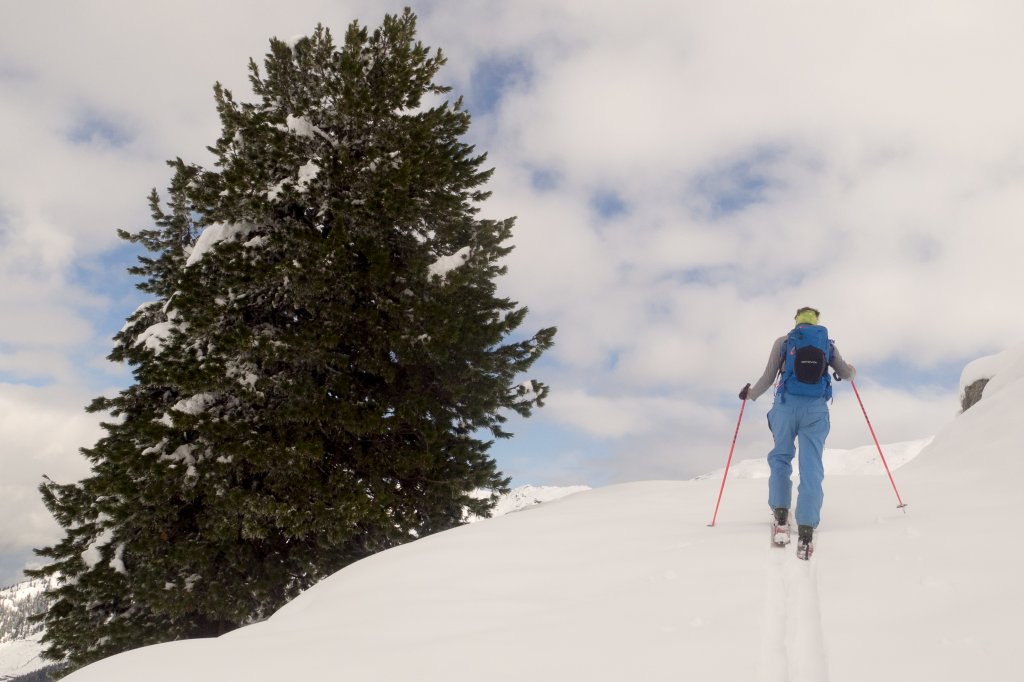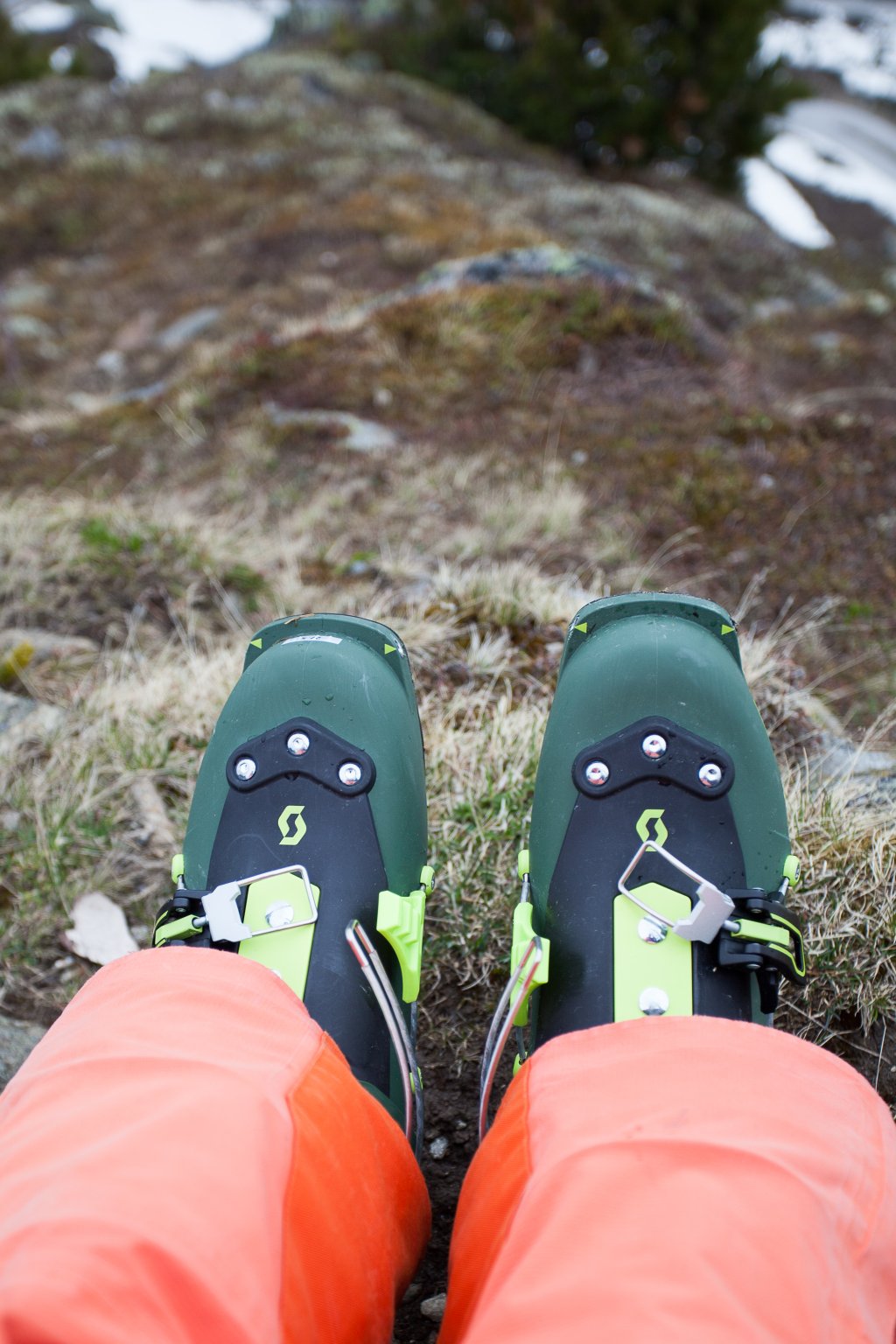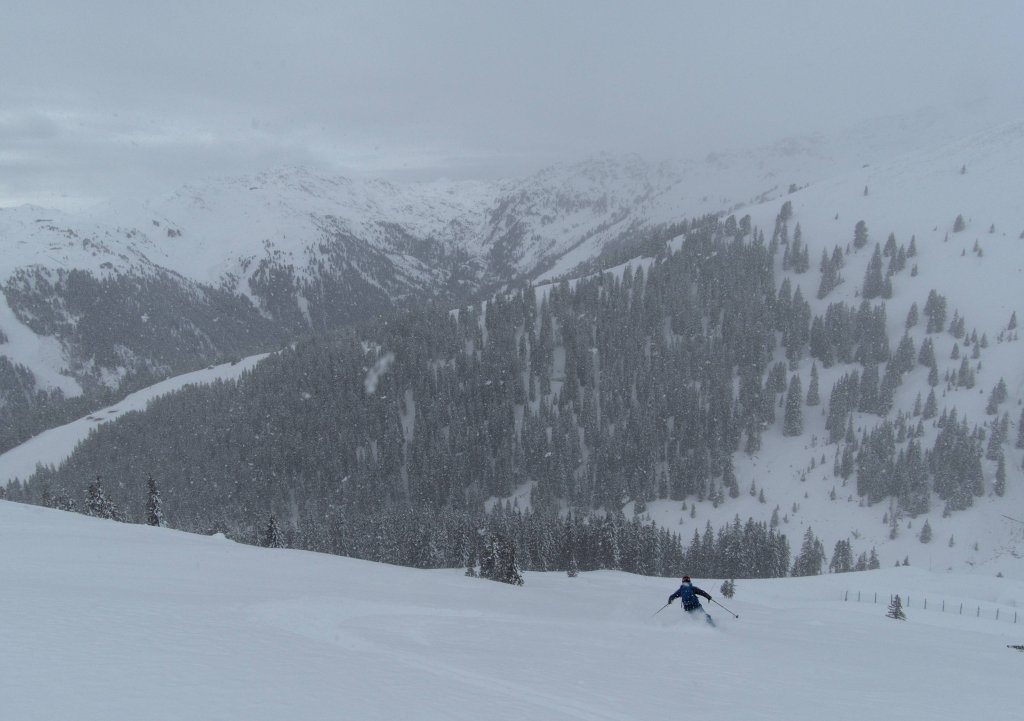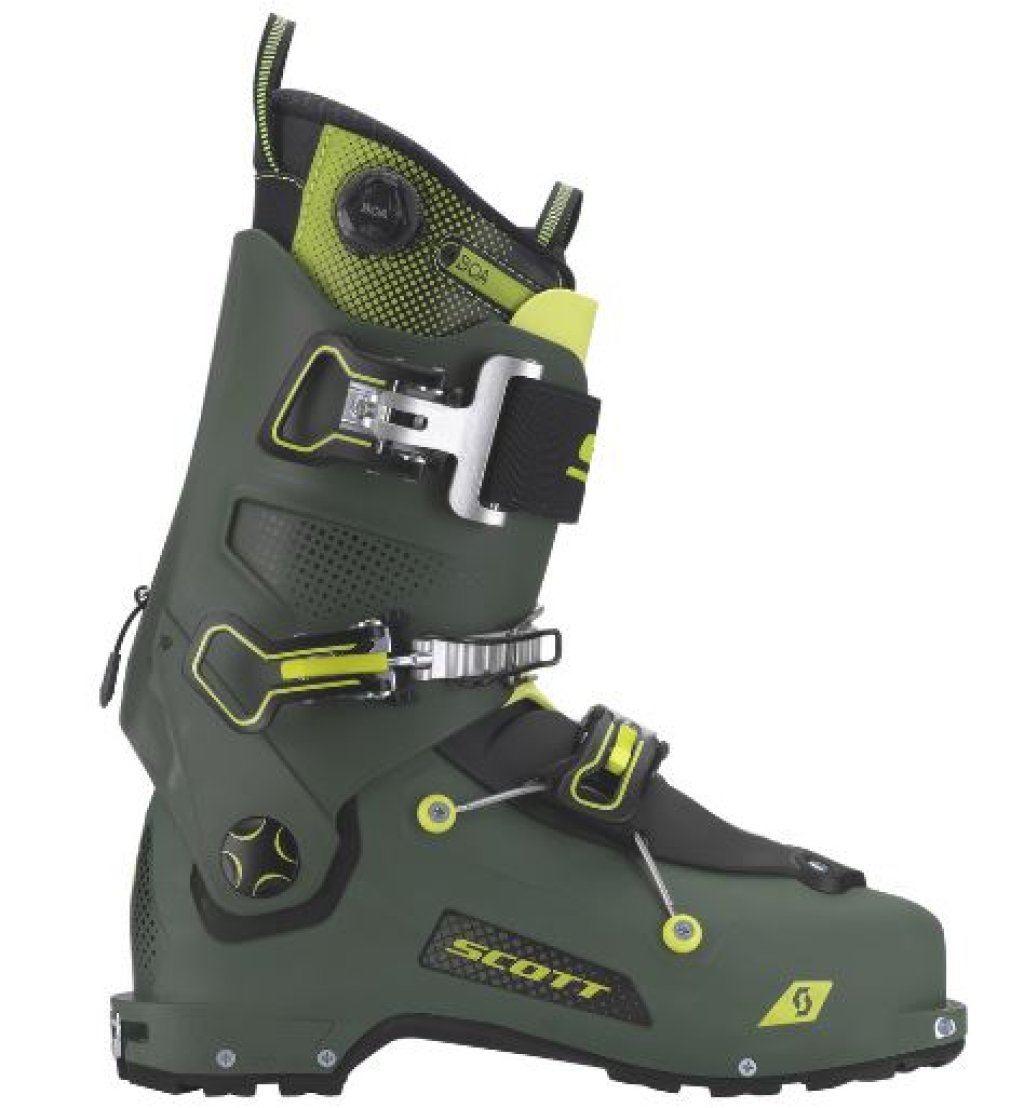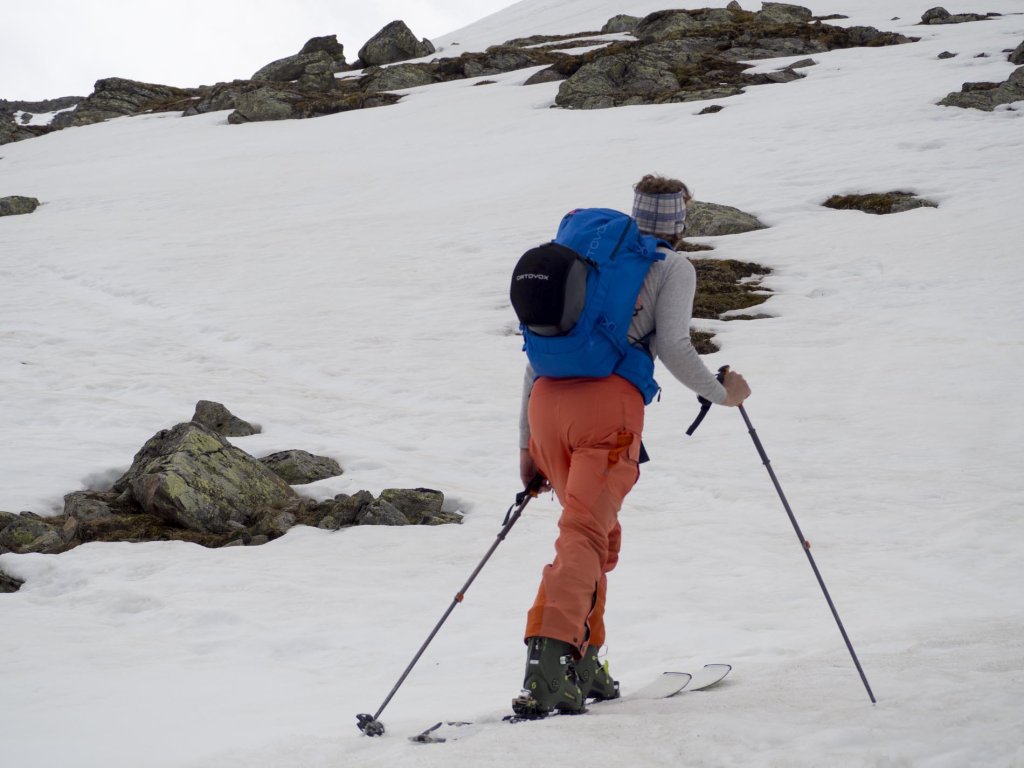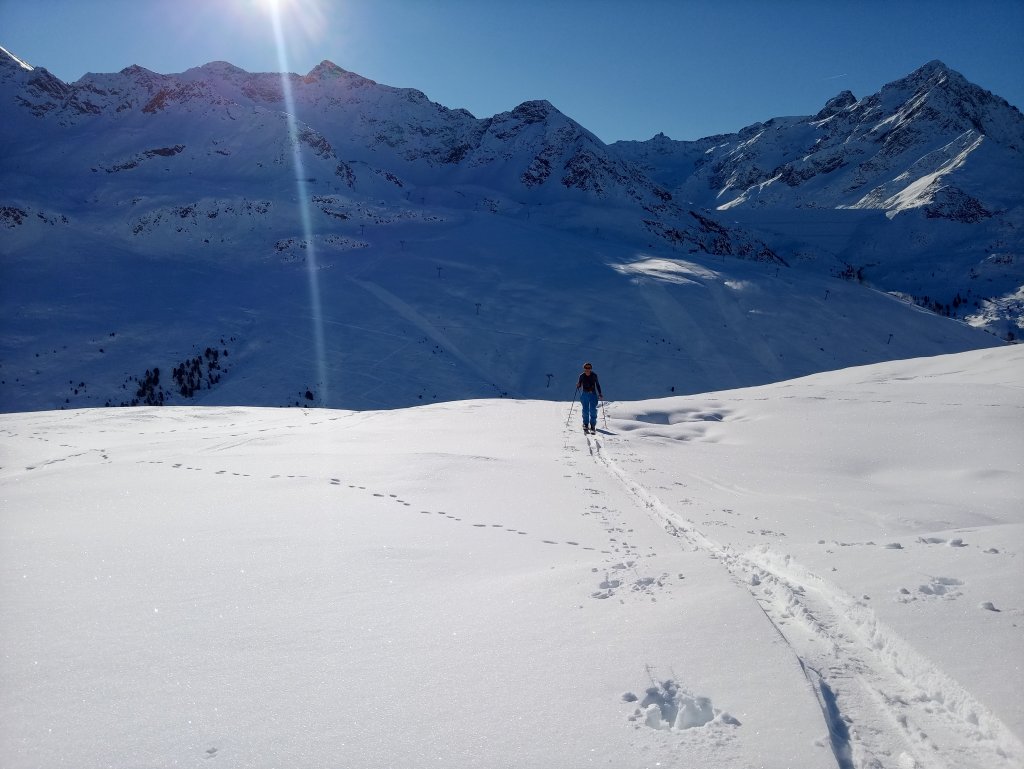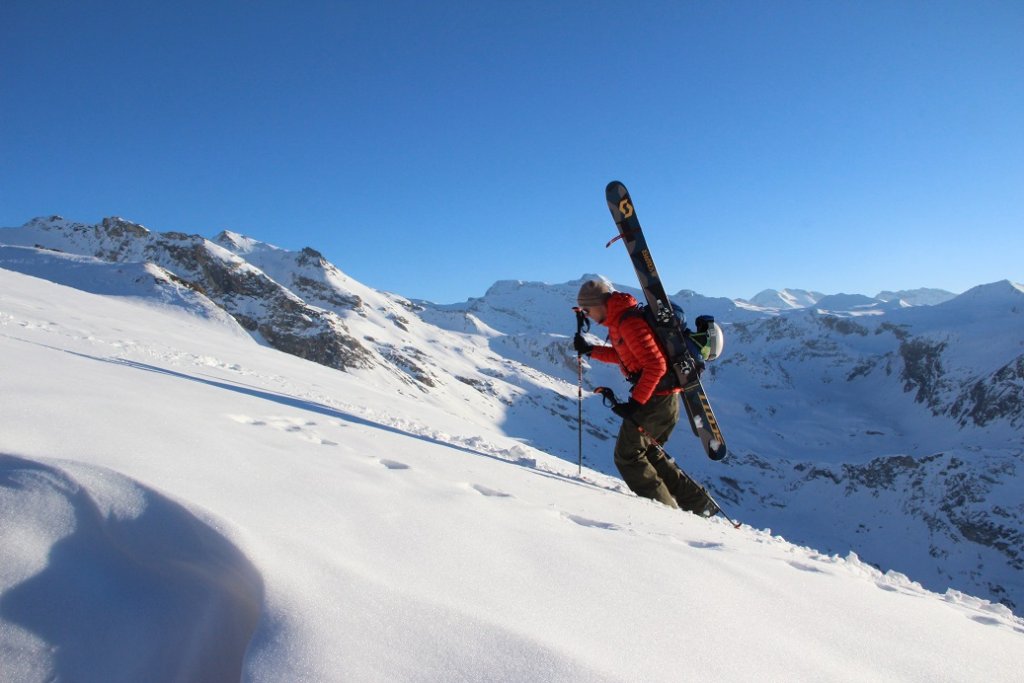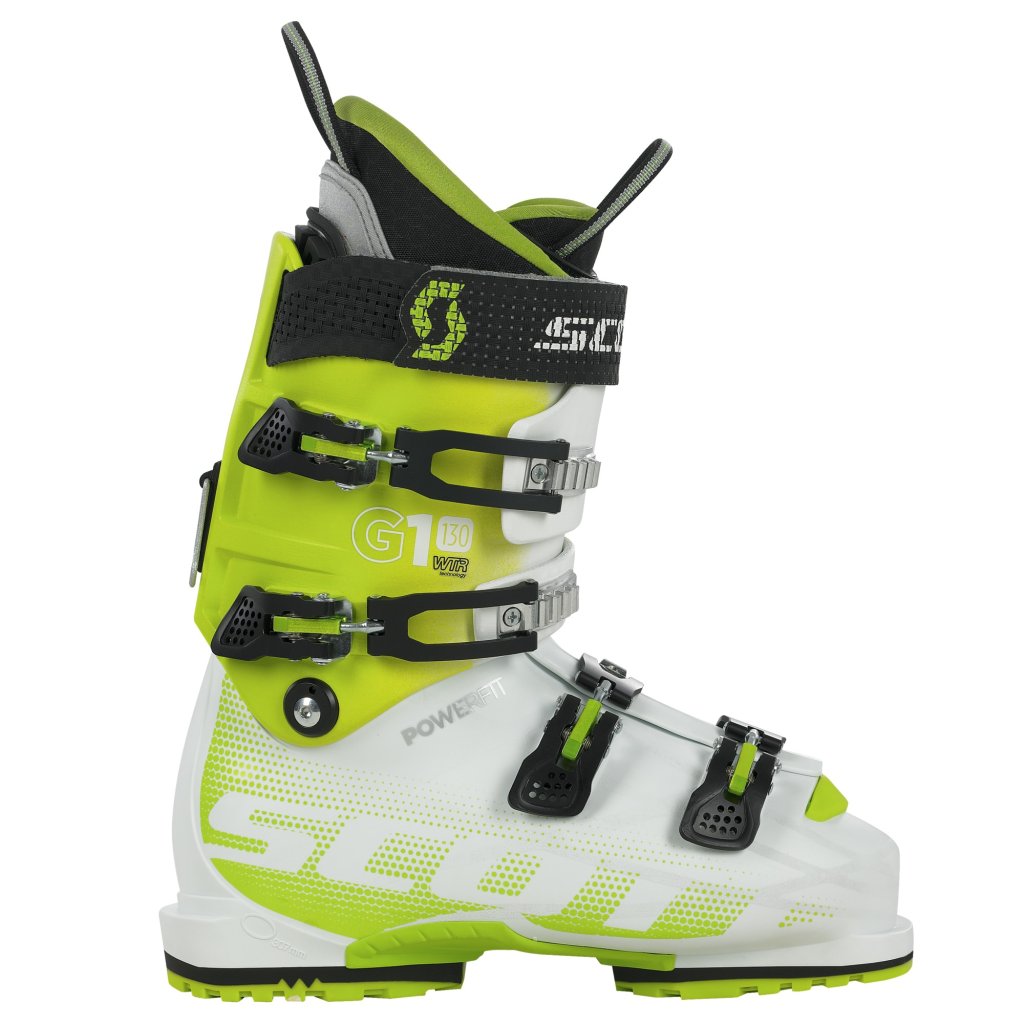First impression
Two things immediately stand out about the Freeguide Carbon. Firstly, although it is Scott's top-of-the-range ski touring boot, it has "only" two proper buckles and the "buckle" at the top of the shaft is designed as a powerstrap. I'm more familiar with this from lighter boots that are designed more for climbing. Nevertheless, the Freeguide Carbon feels like a freeride or downhill-orientated touring boot at the latest when you try it on. The existing buckles are obviously easily sufficient to enable an extremely tight flex.
Another unusual feature is the Boa system on the liner, which is used instead of lacing. This allows the liner to be closed easily and quite firmly and opened again quickly.
The locking mechanism of the Freeguide Carbon is on the inside, which, in contrast to the currently more widespread external variants, naturally offers the advantage that it is less easily damaged.
Tester and test conditions
I'm just over 180cm tall and weigh a good 75kg. I ski a lot, mostly on ski tours, but also freeriding and piste skiing in the ski resort. As I place particular emphasis on downhill skiing, I usually use wide skis and stable, downhill-orientated boots. Over the last few years, I have tested numerous boots, with the Scott S1 and the La Sportiva Skorpius being my favourites.
I've been using the Freeguide Carbon since March, although most of the spring season was cancelled due to the coronavirus. I have therefore not yet been able to test the boot in deep winter conditions, but have only used it from late spring until now. I've only used it on ski tours, where there was sometimes nice firn, more often difficult snow and a few times powder. The skis used with the boot were a Downskis CountDown 104 and a Downskis CountDown 104 L.
I tested the boot in size 27.5, which is quite short for me with 28cm long feet. However, I still have some room in the width, so the boot tends to be designed for wider feet. But the rule here is of course: try them on!
Test report
The boot sits well on the foot and is easy to adjust despite the seemingly small number of buckles. The Boa system ensures that there is no slipping in the liner and also saves you having to lace up. The liner may not be the lightest, but it is of good quality. It can be customised by baking it, is relatively warm, has the right mix of cushioning and power transmission and is durable.
